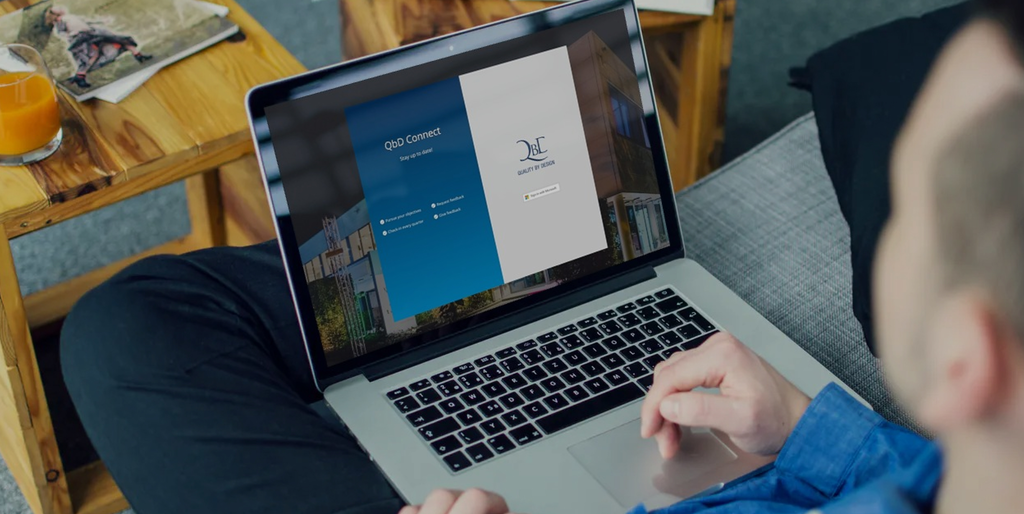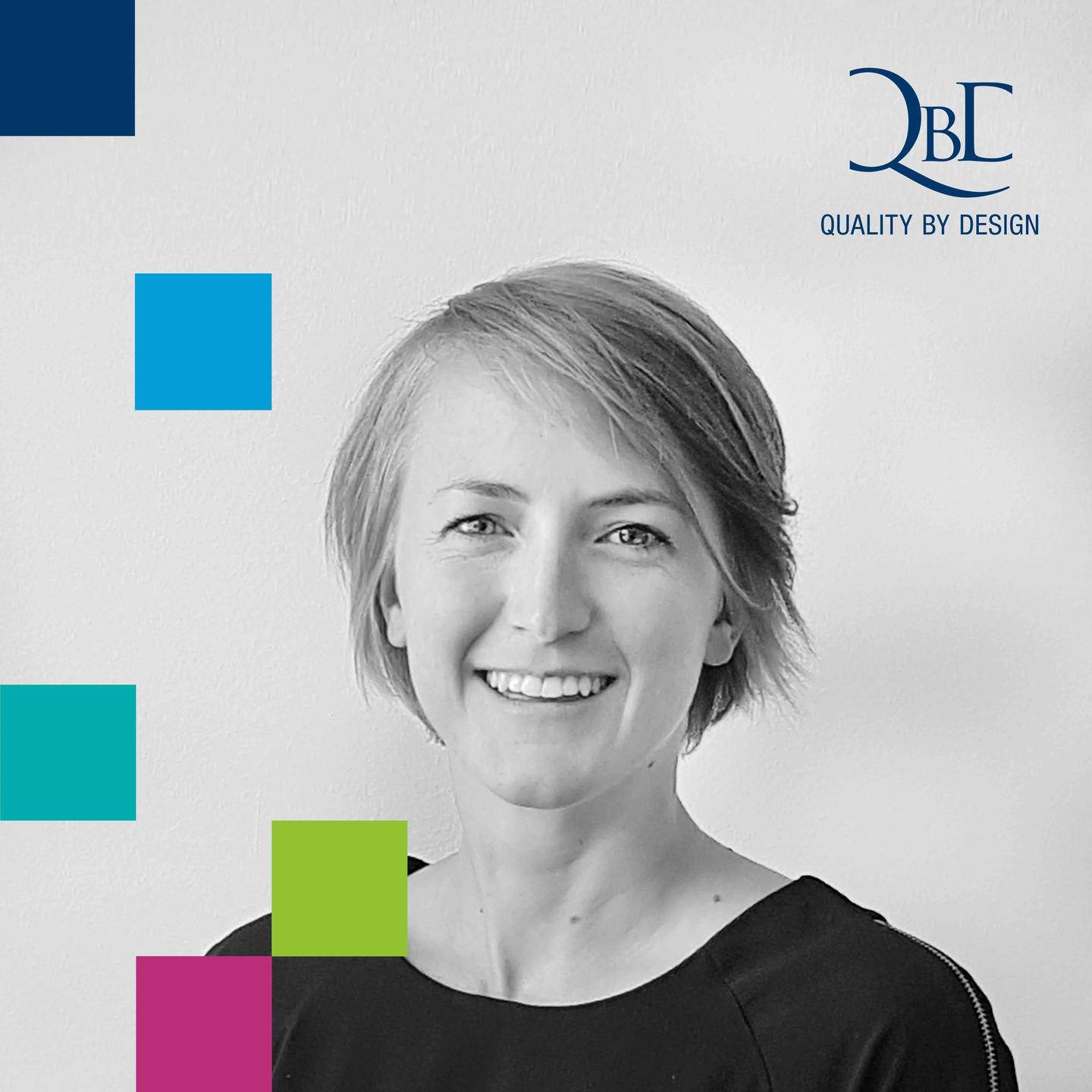Your web browser is out of date. Update your browser for more security, speed and the best experience on this site.

QbD
Over the past months, we helped QbD build an HR tool to facilitate the succession of their consultants. We spoke to Hannah Dreesen, HR Business Partner at QbD, to find out how she experienced the course and end result of the project.

Interview
I have been working for QbD for just over five years now. In the first year, my focus was mainly on recruitment, later I added the follow-up of our consultants. Because our HR team grew strongly in recent years, I was able to evolve into a role with a focus on internal HR projects. 'QbD Connect', the tool developed by Axxes, is one of these.
QbD is a knowledge organisation that supports companies in the Life Sciences industry. We consider this sector to be very broad: healthcare, pharma, medical devices, biotech. You name it! With our consultants, we help companies to bring their products or therapies to the market in a high-quality and safe manner. We also guide our clients through the entire life cycle of their product: from R&D to distribution. The people we hire usually have a scientific background or experience: engineers, biomedical engineers, chemists, pharmaceutical scientists, etc. They are located at our customers spread over Belgium, the Netherlands, Spain, Mexico and Colombia.
You must be busy now in Corona times?
It is very busy: in the last five years I have never seen so many questions from our clients come in!
At some point you came to Axxes to develop an HR tool. Why?
QbD has been around for ten years now. The company has grown and developments are part and parcel of this. We had already digitised many HR processes, except for those concerning the follow-up and performance of our consultants. We were still working with Word documents in a shared folder. We had to find a suitable solution for this.
We made an internal analysis of exactly what we wanted and what the tool had to be able to do. Did we want a tailor-made tool or a standard package? The latter were a bit too American for our liking and did not fully fit in with our business. Because we were familiar with the team and the way Axxes works, we put the question to them.
Benjamin Goesaert (Managing Director) and Hannes Lowette (Head of Learning & Development) then visited us. They listened to what we needed and gave a demonstration of their Performance Cycle tool. They developed this tool two years ago for Axxes. We noticed pretty quickly that Axxes is quite similar to QbD in terms of the type of company and how they deal with their employees. By adapting the Performance Cycle a little it could perfectly support our process. The collaboration was born!
What must the tool be able to do?
On the one hand, facilitate more times of contact with our employees, and on the other hand, provide 360 degree feedback. This has to be requested and collected from various colleagues. In the past, we had to pass all this on from one colleague to another, which is obviously less powerful than when the consultant can pass on the feedback directly.
Consultants can now also ask the client, HR and colleagues for feedback themselves. In other words, they can ask their Team Lead for an evaluation. The responsibility for this no longer lies with us, putting the consultants in the driver's seat.
How did the project go with Axxes after your official go?
From QbD I was the one who pulled the project and Shauni Wuyts (Customer Success/Account Manager) was our contact from Axxes. In a call we discussed the next steps and the division of roles. We also discussed which features of the Performance Cycle tool we would or would not be taking over.
The size of the team was always adjusted according to the needs of the project. At the start, four developers were involved and a Technical Lead who always kept the technical overview. In calls, he was also the one who indicated what was technically possible and helped look for solutions.
At one point there were seven developers working on the tool, today that has been reduced to two developers, one scrum master and Shauni as Project Manager. Axxes is still delivering a number of features.
What has been the duration of the project?
You started at the beginning of December and we went live in the middle of February. Axxes showed a first look-and-feel in December, and from January on we had regular demo moments. When a new functionality was added we could give feedback immediately and adjust where necessary. To this day we have a weekly or biweekly call where everyone from the team is present. Axxes also created a Teams group, so we can easily give feedback or report bugs.
So the communication was good?
Yes, I think so. The communication with Shauni also always went smoothly. When things needed to be checked or followed up, it's nice when feedback is always very quick. We never had the feeling that we had to ask for certain things and we found a sounding board in Axxes. A real breath of fresh air!
When certain things took a bit longer, this was also communicated openly. In such cases we were immediately given a new delivery date.
Where will the tool be used? Only in Belgium or also internationally?
Currently, it is already being used in Belgium and the Netherlands. The intention is to also onboard Spain, Mexico and Colombia. At TRIUM, a company that recently joined the QbD group, we will also implement it because they are so enthusiastic about the tool. Elly De Bruyn, our HR director, still says almost every week what an added value the tool gives.
Do you also have feedback from the consultants themselves?
Absolutely! They say they feel closer to QbD and are followed up more quickly. The integrated feedback through various channels is a great added value for them. They also say that they feel more in control. It used to be a process that was exclusively initiated by HR. I can feel the difference myself. With these quarterly check-ins, the idea is that people no longer wait until our half-yearly evaluation meeting to express certain issues, but that they can do so much more quickly. That way, we can respond much more quickly.
What’s next?
The tool will continue to evolve. It is never finished and new features may be added. Because Axxes keeps developing the tool for itself we are always aware of what is still possible.
Very nice to hear, Hannah. Thank you so much for your time and hopefully we will see you on the next project!
